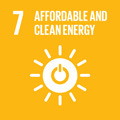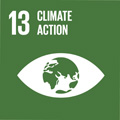- Docente: Beatrice Fraboni
- Credits: 10
- Language: Italian
- Moduli: Beatrice Fraboni (Modulo 1) Margherita Marsili (Modulo 2)
- Teaching Mode: Traditional lectures (Modulo 1) Traditional lectures (Modulo 2)
- Campus: Bologna
- Corso: First cycle degree programme (L) in Physics (cod. 9244)
-
from Feb 24, 2025 to Jun 04, 2025
-
from Sep 17, 2024 to Dec 10, 2024
Learning outcomes
At the end of the course the student will have acquired competences in: a) fundamental principles of statistical physics to describe classical and quantum particle ensembles, with applications related to condensed matter physics and radiation; b) atomic and molecular structures and fundamentals of band theory and crystalline structures
Course contents
Module I semester:
Recalls of Calculus of Probability: Axioms of probability and probability distributions. Examples (coin toss, random walk). Thermodynamic limit of the binomial distribution and Gaussian distribution. Central Limit Theorem. Introduction to the concept of microstate and macrostate. Boltzmann entropy.
Microcanonical ensemble: Introduction to statistical ensembles (microcanonical, canonical, grancanonical). Thermal contact and heat exchange. Principle of maximum entropy. Gibbs entropy. Examples and exercises.
Canonical ensamble: Partition function. Boltzmann distribution. Connections between statistics and thermodynamics. Examples and exercises.
The ideal gas: Distinguishable and indistinguishable particles. Monoatomic gas. Polyatomic gas (hints). Energy Equipartition Theorem. Examples and exercises.
Grancanonical ensemble: Concept of chemical potential. Partition functions. Chemical equilibrium and law of mass action. Examples and exercises.
Quantum statistical mechanics: Quantum particles, Bosons and Fermions. Maxwell-Boltzmann statistics. Fermi-Dirac distribution. Bose-Einstein distribution. Chemical potential of Fermions. Fermi energy. Examples and exercises.
Fermions and bosons: Thermal averaging, Sommerfeld expansion and thermodynamical properties of the Fermi. The Black Body. Bose-Einstein condensation (hints). Phonons. Examples and exercises.
Module II semester:
Atomic Models: Atomic spectroscopy, Thomson’s model, Rutherford’s model, Bohr’s model, Franck-Hertz experiment, Sommerfeld model
One-electron atom (H): The Schroedinger equation and its solution for the Hydrogen atom: energy levels and eigenfunctions of the bound states; radial distribution density. Orbital angular momentum and magnetic dipole moment; Stern-Gerlach experiment; Spin, Spin-orbit interaction. Dirac equation, perturbative solutions; Fine structure; Lamb shift and hyperfine structure. Selection rules and transition rates; Spectral line width and shapes.
Two-electron atom (He): The Schroedinger equation for two-electron atoms: ortho and para states. Spin wave functions and the Pauli exclusion principle. Energy level scheme for two-electron atoms. Ground state and excited states; Coulomb integral and exchange integral.
Many-electron atoms: The central field approximation; Hartree-Fock model and Slater determinants. The periodic table of the elements. X-ray spectra, Moseley’s law. Corrections to the central field approximation: L-S coupling and j-j coupling. Zeeman effect.
Molecules: Molecular structures. Ionic and covalent bond. The H2+ ion; Bonding and antibonding orbitals; Born-Oppenheimer approximation, LCAO method. Molecular roto-vibrational spectra (harmonic and anharmonic approximation)
Crystalline solids: Introduction to the band theory in solids; Crystalline and periodic structures; Bloch theorem, electrons in a solid; electron wave function in a lattice; Insulating, semiconducting and conducting materials.
Readings/Bibliography
- Malcolm P. Kennett, Essential Statistical Physics,Cambridge University Press
- B.H.Bransden & C.J. Joachain, Physics of Atoms and Molecules, ISBN-13: 978-0582356924
- Eisberg-Resnick, Quantum Physics of Atoms, Molecules, Solids, Nuclei and Particles, Ed. Wiley ISBN-13: 978-0471873730
- Concepts in Thermal Physics, Stephen J. Blundell and Katherine M. Blundell,
Oxford University Press
Lecture notes available on Virtuale.unibo.it
Teaching methods
Frontal lectures and classroom tutorials for problem solving
Assessment methods
The final assessment is unique for the two modules and consists of two parts: 1 - written exam with 3 exercises (1 relating to the contents of the module of the first semester and 2 to the contents of the module of the second semester). The grade is 10/30 for each exercise, totaling a maximum of 30/30. The written test is passed only with a grade greater than or equal to 18/30 and is valid for the entire exam session in which it is passed. 2 - oral exam: the aim is to verify the student's ability to understand, elaborate and analyze the contents of the course.
Students attending classes may be assessed separately for the two modules: module of the I semester (2 written exercises and 1 oral interview) only in the winter exam session (January/February); module of the II semester (2 written exercises and 1 oral interview) only in the summer exam session (June/July) and ONLY if the exam of the I semester module has been passed
Teaching tools
frontal lecture at the blackboard, slides and projector
Office hours
See the website of Beatrice Fraboni
See the website of Margherita Marsili
SDGs



This teaching activity contributes to the achievement of the Sustainable Development Goals of the UN 2030 Agenda.
